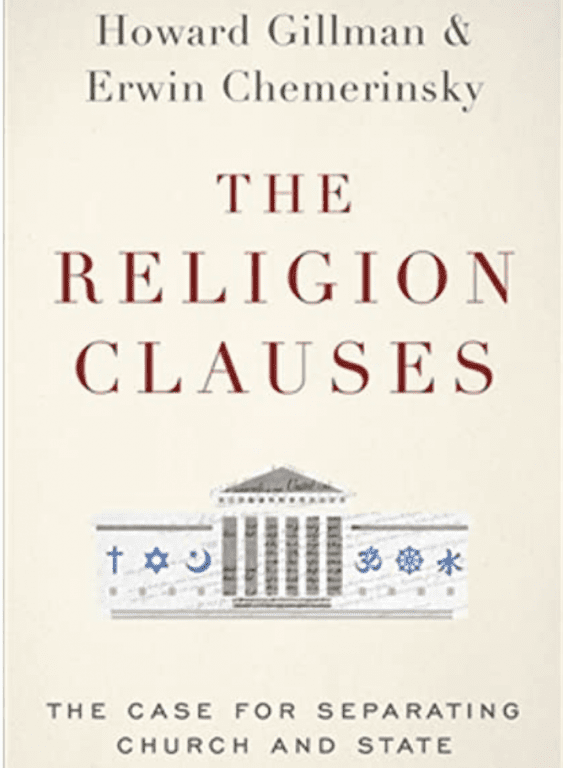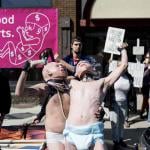Introduction
The violent assault on the United States Capitol Building on Wednesday was shocking and traumatic. To construct a response, I would like to start with a story from the history of my own chosen tradition of Unitarian Universalism to put this week’s events into a larger context. Then, there are a few related aspects of what happened on Wednesday that I would like us to explore in more detail. Finally, I will point us toward where we might go from here.
I. History
Let’s begin with a brief trip backward into history. This coming Wednesday will mark the 452nd anniversary of a significant event from the Unitarian half of Unitarian Universalism. This story is worth revisiting annually, but in the wake of recent events, its relevance is even stronger as a reminder both of the importance and the precariousness of our task of building the world we dream about—a world not of supremacy and dominance, but of ever-widening circles of compassion. To say more about what I mean, come with me on a brief journey to the mid-1500s.
John Sigismund Zápolya (1540-1571), King of Hungary, was history’s only Unitarian king. On January 13, 1568, he enacted the Edict of Torda, a landmark act of religious tolerance and freedom of conscience. At a time when many ruling authorities were persecuting or executing religious dissenters, Sigismund created space for religious diversity. Specifically the Edict’s enactment meant that:
- Congregations were declared free to hire a “preacher whose teaching they approve” instead of having a preacher imposed on them.
- Ministers were declared free to preach based on their own best understanding of the truth instead of having predetermined assignments or limits.
- Individuals were declared free to practice the religion of their choice.
These basic protections for the free exercise of religion may seem like common sense today, but let me give you a point of comparison to help contextualize how groundbreaking the Edict of Torda was at that time.
In 1531, a little more than a decade earlier, Michael Servetus courageously planted one of the first strong roots that grew into the Unitarian half of Unitarian Universalism when he published a book with the not very subtle title On the Errors of the Trinity. Rather than tolerating this book as one person’s strong opinion, in 1553, John Calvin had Servetus burned at the stake for the so-called heresies of Anti-Trinitarianism (believing that the Trinity was an optional not core doctrine) and Anti-Paedobaptism—(being against the baptism of infants and for the baptism only of people old enough to choose for themselves what they believe). In contrast to Calvin’s harsh theocratic rule in Geneva, King Sigismund’s Edict of Religious Toleration, a mere fifteen years later in 1568, gave the world a very different example of how to co-exist amidst religious differences.
To be fair, I should add that the Edict of Torda was by no means a full-throated celebration of religious pluralism such as we might hope for here in the twenty-first century. With the Edict of Torda, tolerance was extended to only four religious groups: Lutherans, Calvinists, Catholics, and Unitarians. But for the mid-1500s, only a few decades into the Scientific Revolution (1543 – 1687), constructing a societal “big tent” large enough to hold all four of these different religious groups was progress compared to the standard practice in many places of the time which established significant privileges for only one dominant state-sponsored religion—and (often) terrible disadvantages for any other religion.
To finish telling this part of the story, I need to introduce you to one other important person from UU history: Francis Dávid (c. 1520 – 1588). Dávid was King Sigismund’s court preacher, who both converted Sigismund to Unitarianism and wrote the Edict of Torda. Tragically, Sigismund died three years after he passed the Edict, at the far too young age of thirty (after being severely injured in a hunt.) In his place, a new Catholic king was crowned, and history gave us another reminder of how much who is in charge can matter.
The new king removed all Unitarians from positions of power. And Francis Dávid, the Unitarian author of The Edict of Torda, was found guilty of preaching new innovations in religion. If we UUs are guilty of anything, it’s definitely innovations in religion. Dávid was convicted of two things in particular: (1) preaching that Christians should follow Jesus’s ethics instead of worshiping him, and (2) advocating that religion should continue to evolve, instead of conforming to the ways of the past. We contemporary UUs are generally proud of doing both these things: we often say, “We believe in deeds, not creeds” and “Revelation is not sealed.” Dávid, however, was tragically imprisoned and died later that same year at the age of either 58 or 59. As with Servetus before him, Dávid is a martyr for Unitarianism, and for freedom of conscience and religious liberty.
I’ve taken the time to touch on this part of UU history because, as I prepare in a few moments to criticize some misunderstandings of religious liberty today, I cannot emphasize enough that theologically liberal traditions such as Unitarian Universalism tend to strongly support religious liberty when it means protecting the rights of a wide spectrum of beliefs and practices—but not when the principle of religious liberty is abused to allow one group to harm or dominate other views.
II. Christian Nationalism
So let’s keep this story from the past in mind as we shift our focus now to the desolating sacrilege of Wednesday’s domestic terrorist attack on the U.S. Capitol. There were a number of different factors that led to the resulting mob’s actions, including a lengthy cynical disinformation campaign about election fraud. I want to particularly focus on Christian Nationalism, a perverted understanding of religious freedom grounded in the exclusivist worldview of White Christian Supremacists. I am not saying that all of Wednesday’s insurrections were instigated by Christian Nationalists—but the worldview of White Christian Supremacists was a significant factor at play.
Let me say more about that statement. Some of you may recall that a few weeks prior to the 2016 presidential election, I preached a sermon inspired by the important book, The End of White Christian America by the sociologist of religion Robert Jones. He recently published an important follow-up book titled White Too Long: The Legacy of White Supremacy in American Christianity. And he said, regarding Wednesday’s domestic terror attack: “Pay attention to the symbols being carried: crosses, ‘Jesus saves’ signs, Confederate flags. This unholy amalgamation is the legacy of White Supremacist Christianity. We have to name this heritage if we’re going to heal our nation from this deadly disease.”
The many photos of the insurrectionists carrying Confederate flags nonchalantly and with impunity through the Capitol are telling signs of white male privilege. There were also many signs being carried with messages reflecting the religious right, but I’ll limit myself to only two. One said “Jesus saves.” Even worse was the massive banner unfurled at the Capitol that said, “Jesus 2020.”
Let me also be sure to clarify that it is not my intent today to criticize the Christian tradition as a whole. As I’ve said at length previously, following the way of Jesus today might lead one to oppose violent imperialism (American or otherwise). And If you are curious to learn more, there is a fascinating and accessible exploration these topics in John Dominic Crossan’s important book, God and Empire: Jesus Against Rome, Then and Now.
What I cannot condone is the behavior of insurrectionists, violently breaking into the U.S. Capitol and in some cases, seeking to harm and even kill elected representatives. Jesus would never have advocated for nor condoned any of that. What the Christian Nationalist segments of this lynch mob represented was not by any stretch the way of Jesus, but instead, a toxic strain of Christianity called Constantinianism (after the fourth-century Roman Emperor Constantine) a strain perverted by violence and patriarchy.
Here’s another example of what I’m talking about: this link is to a photo of some of these insurrectionists milling about on the floor of the United States Senate. Notice the so-called Christian flag in the lower right hand corner of the photo.
Some of you may be unfamiliar with this flag. Others of you, like me, may be all too familiar with it. I grew up with both that Christian flag and the American flag at the front of the sanctuary (on either side of the baptismal) of the Southern Baptist congregation in which I was raised. Also noteworthy is that every summer at the beginning of each day of our week long Vacation Bible School, all the elementary-aged children were gathered together in the main sanctuary to pledge allegiance to the Bible, the Christian flag, and the American flag—a common practice in many conservative Christian congregations.
I should add that the congregation of my childhood had a lot of good points as well—but there are many congregations (even more frequently today) that are even more Christian Nationalist than the congregation in which I was raised. If you are curious about what “worse” looks like, two resources among many others are Chris Hedges’ 2008 book American Fascists: The Christian Right and the War on America, and the 2006 documentary Jesus Camp (available for streaming on many platforms including Hulu and Kanopy). I’m intentionally highlighting a book and film from more than a decade ago to emphasize that the trend lines that brought us to Wednesday’s events are not new. Given time enough, we could of course go back further to describe other political actions seeking to tear down the wall separating church and state, such as the movement in the 1950s to add “under God” to the Pledge of Allegiance and “In God We Trust” to our currency.
I grew up with this stuff. I’ve seen first hand that Christian Nationalists have a deep desire to privilege a conservative, racist, patriarchal, anti-semitic form of Christianity in the public square. These folks are also deeply committed to inculcating and promulgating the myth that the United States was founded as a Christian nation.
As we all saw on our screens on Wednesday, there is much truth to the saying, often incorrectly attributed to Sinclair Lewis: “When Fascism comes to America, it will be wrapped in the flag and carrying a cross.” Given more time, we could explore all the ways that the Ku Klux Klan—also a White Supremacist and Christian Nationalism movement—similarly abused and perverted Christian symbols.
It is important to understand that Christian Nationalism is about much more than Wednesday’s tragic events. In particular there is a related current trend in the United States Supreme Court in favor of Christian Nationalism, a trend that is disturbing to me for many reasons. I find it especially upsetting to watch play out the very thing that my childhood congregation—the one that had me pledging allegiance to the Bible, the Christian flag, and the American flag—hoped would one day happen in their wildest dreams to the Supreme Court. These recent verdicts are the beginnings of the widespread hopes in conservative Christian circles coming to fruition.
My childhood youth group also encouraged us to participate in nationwide conservative Christian events such as “See You at the Pole,” a prayer ritual on public school property (but before official school hours begin) that is intentionally designed to push the boundaries of what is constitutional regarding prayer in public schools. (I know that is the explicit intent because that’s explicitly what our youth group leaders told us.) These events are allegedly student-led—even though adults overtly plan and encourage these events to be held. And they are held precisely around the flag pole to conflate conservative Christianity and patriotism. “See You at the Pole” events have been organized annually each fall for more than two decades, and they are planned again for September 22, 2021.
III. Governmental Neutrality to Religion
Seriously, ya’ll, in my youth group we were taught about the history of the Supreme Court cases surrounding the separation of church and state precisely to encourage us to subvert them—and eventually, to overturn them.
 If we had more time, I would love to go case-by-case through the history of Supreme Court jurisprudence related to religion and the First Amendment, but I will limit myself to only a few recent cases. For those curious about the details, I highly recommend the short and accessible book, The Religion Clauses: The Case for Separating Church and State by Erwin Chemerinsky and Howard Gillman. And relatedly, for those of you who have done a lot of work in recent years exploring male privilege and white privilege, another helpful book is White Christian Privilege: The Illusion of Religious Equality in America, by Khyati Joshi (New York University Press, 2020).
If we had more time, I would love to go case-by-case through the history of Supreme Court jurisprudence related to religion and the First Amendment, but I will limit myself to only a few recent cases. For those curious about the details, I highly recommend the short and accessible book, The Religion Clauses: The Case for Separating Church and State by Erwin Chemerinsky and Howard Gillman. And relatedly, for those of you who have done a lot of work in recent years exploring male privilege and white privilege, another helpful book is White Christian Privilege: The Illusion of Religious Equality in America, by Khyati Joshi (New York University Press, 2020).
For now, let me mention just a few more basics legal precedents related to religious freedom, because all of this can be helpful for dismantling parts of the worldview that made Wednesday’s attack even conceivable in the first place, in hopes of strengthening the idea of a multicultural democracy with peace, liberty, and justice—not merely for some—but for all.
In general, Erwin Chemerinsky (the Dean of the University of California, Berkeley, School of Law) gets it right in his book The Religion Clauses—that in a religiously-diverse country such as the United States, our best bet is usually to lean toward the side of keeping government neutral with regard to religion (xi). Religious folks (whether progressive, moderate, or conservative) remain free to lobby the government based on one’s conscience and religious values, but the government itself should remain neutral, “neither aiding nor opposing religion” (164).
In contrast, the current trend on the Supreme Court is toward accommodation of religion over the rights of equal citizens. And if you look closely, recent decisions have almost always been about accommodating theologically conservative Christians, not leaving space for religious pluralism more broadly (xii). Not surprisingly, the Supreme Court Justices most in favor of accommodating conservative Christians are themselves conservative Christians.
At this point, it’s important to remember what we learned earlier about the world more than four centuries ago. In the 1500s, brutal religious oppression was often the consequence for anyone who dissented from the religion currently favored by governing elites. Servetus was burned at the stake for his religious beliefs, and Dávid died in prison for his religious beliefs. (The Edict of Torda was one brief glimmer of religious toleration at that time.)
Moving ahead to the 1600s and 1700s, the norm continued to be dissension and even violence in the name of religion. Clearly, when the founders of our country came together to begin the American experiment, one of the major factors they had in mind was freedom of religion. that, “In the century and a half leading up to America’s Declaration of Independence, England had been consumed by violent, destabilizing, and oppressive battles over the relationship between government and religion.” Our founders wanted to learn from England’s mistakes upon forming the new government (21).
At that time, Christianity was an explicit part of the laws of England (29); that’s precisely what many of our founders—especially influential voices such as Jefferson and Madison—did not want to establish here in the United States (22). They did not want to found the U.S. as a Christian Nation, which is why the very first Amendment includes both an Establishment clause (“Congress shall make no law respecting an establishment of religion”) and a Free Exercise clause (“or prohibiting the free exercise thereof).
In general, the interpretation of these two clauses is more of a “polarity to be managed” than a simple problem to be solved. But in recent years, the Supreme Court’s Constitutional interpretations have been leaning on the side of publicly accommodating conservative Christianity.
Although there are many cases I would love to bring up, I will limit myself to three that the Supreme Court decided just this past summer—only about six months ago—to show that we really are on the leading edge of a risky major paradigm shift. In each case, I will invite you to pay particular attention to these cases’ dissenting opinions, which are desperately urging us to notice that we are heading in the wrong political direction.
The first case is Espinoza v. Montana Department of Revenue, which ruled that state-based scholarship programs must provide public funds not only to public schools, but also to students who attend private religious schools. Here’s an excerpt from Justice Sotomayer’s strongly worded dissent. (Justices Ginsburg, Kagan, and Breyer also dissented.):
Today’s ruling is perverse…. “While the Free Exercise Clause clearly prohibits the use of state action to deny the rights of free exercise to anyone, it has never meant that a majority could use the machinery of the State to practice its beliefs.” Today’s Court, by contrast, rejects the Religion Clause’s balanced values…and it does so only by setting aside well-established judicial constraints.”
Along those lines, if our nation’s founder and fourth President James Madison were alive today, he would likely tell us that this decision goes wrong by using tax dollars to support religions that not all tax payers believe in.
The second religion case from last summer is Lady of Guadalupe v. Morrissey-Berru, which takes the “ministerial exception in employment discrimination”—that’s something good that resonates with the reasoning of the Edict of Torda, that congregations should be able to hire whomever they please as their religious leader—and unduly expands it to include many other people in private religious organizations that are not the equivalent of ordained clergy. Again, I will quote Justice Sotomayor’s dissent that was joined by the late Justice Ginsburg. I will quote a slightly longer part of her conclusion to give you a real taste of how strongly she feels the current direction to be in error:
The Court’s conclusion portends grave consequences. “Thousands of Catholic teachers” may lose employment-law protections because of today’s outcome. Other sources tally over a hundred thousand secular teachers whose rights are at risk. And that says nothing of the rights of countless coaches, camp counselors, nurses, social-service workers, in-house lawyers, media-relations personnel, and many others who work for religious institutions. All these employees could be subject to discrimination for reasons completely irrelevant to their employers’ religious tenets. In expanding the ministerial exception far beyond its historic narrowness, the Court overrides Congress’ carefully tailored exceptions for religious employers. Little if nothing appears left of the statutory exemptions after today’s Constitutional broadside. So long as the employer determines that an employee’s “duties” are “vital” to “carrying out the mission of the church,” then today’s laissez faire analysis appears to allow that employer to make employment decisions because of a person’s skin color, age, disability, sex, or any other protected trait for reasons having nothing to do with religion. This sweeping result is profoundly unfair. The Court is not only wrong on the facts, but its error also risks upending anti-discrimination protections for many employees of religious entities. Recently, this Court has lamented a perceived “discrimination against religion.” Yet here, it swings the pendulum in the extreme opposite direction, permitting religious entities to discriminate widely and with impunity for reasons wholly divorced from religious beliefs. The inherent injustice in the Court’s conclusion will be impossible to ignore for long, particularly in a pluralistic society like ours. One must hope that a decision deft enough to remold Hosanna-Tabor [a 2012 Supreme Court case rightly, unanimously decided to protect the ministerial exception], to fit the result reached today, reflecting the Court’s capacity to cabin the consequences tomorrow.
The third case of interest is Little Sisters of the Poor Saints Peter and Paul Home v. Pennsylvania, which ruled that religious orders (think monks and nuns) will not be required to provide health insurance for contraceptive coverage if it goes against their religious beliefs. This ruling continues along what I believe to be an erroneous path that started with the earlier Hobby Lobby decision. To quote Justice Ginsburg’s dissent, “Today, for the first time, the Court casts totally aside countervailing rights and interests in its zeal to secure religious rights to the nth degree.” As she says elsewhere in her dissent, the higher priority here should be “women employees’ equal access to preventive services, thereby advancing public health and welfare and women’s well-being.”
This troubling trajectory matters. Consider that a little more than a month ago in Roman Catholic Diocese of Brooklyn v. Cuomo, the Supreme Court granted exceptions from Covid-related restrictions to certain religious organizations. This particular sort of favoring of religion over science invites a sarcastic “from the people who brought you the Scopes Monkey Trial….” More evenhandedly, here’s a part of Justice Sonia Sotomayor’s dissent. (Breyer and Kagan also dissented.):
The Constitution does not forbid States from responding to public health crises through regulations that treat religious institutions equally or more favorably than comparable secular institutions, particularly when those regulations save lives. Justices of this court play a deadly game in second guessing the expert judgment of health officials about the environments in which a contagious virus, now infecting a million Americans each week, spreads most easily.
Looking to the future, the Supreme Court trend of granting special privileges to conservative Christians may well be far from over. Keep an eye, for instance, on the case of Fulton v. City of Philadelphia, in which the Supreme Court will rule this coming summer on whether it is constitutional for a religious-backed foster care agency to deny services to a same-sex couple.
Beneath this entire debate is the desire of some conservative Christians to discriminate in public against anyone who disagrees with them. It’s important to be cautious against weighing these cases as isolated ethical dilemmas, rather than as part of the historical sweep of progress toward whom we want to become as a country—and the resulting backlash to increasing inclusion and equality.
For instance, one of my favorite Supreme Court case titles Newman vs. Piggie Park Enterprises. Piggie Park Enterprises was a drive-in barbecue chain owned by the head of the National Association for the Preservation of White People. In 1964, the defendant argued that his freedom of religion should give him the right to refuse service to black customers. Fortunately, the court did not support his racism.
Similarly, “in the 1970s and 1980s, schools claimed that they should be allowed to pay women less than men based on the [religious] belief that men should be the head of the household. In all these cases, the courts ruled that religious views do not entitle any of us to discriminate [in public]” based on gender or race. The same principles should apply today with respect to those who want to use their religious beliefs to discriminate against lesbian, gay, bisexual, and transgender citizens of this country.
Tragically, the Supreme Court is increasingly going in the other direction in support of religious people who want to discriminate in public circumstances. But it is a dangerous abuse of the Constitution to inflict one’s religious bigotry upon others in the public square in the name of religious liberty.
There is a saying that, “When you’re accustomed to privilege, equality feels like oppression” That’s the feeling many conservative Christians experience today—which is true from my experience as someone who grew up Southern Baptist in South Carolina with a lot of Christian privilege. Many conservative Christians have become so accustomed to White Christian privilege that that loss of privilege feels like reverse discrimination; all we are asking is for everyone to respect equality under the law in a multicultural society. But for those who don’t “get” that difference, the politics of grievance can motivate the horrors that played out on Wednesday, desecrations that could easily have gotten much worse.
Conclusion
As I move to my conclusion, let me bring us back one more time to where we began—because we’ve reached another point where the historical perspective I started with really matters. Religious conservatives—including many Justices on the U.S. Supreme Court—seem to have forgotten what serious religious persecution looks like. It is not an unreasonable violation of one’s religious liberty to serve racial minorities at your restaurant, pay women employees wages equal to those of men, or sell a wedding cake to a same-sex couple. That’s nothing more than basic public accommodation to citizens equal under the law in a multicultural civil society in which we are not legally allowed to discriminate based on protected characteristics such as age, disability, gender, marriage and civil partnership, pregnancy and maternity, race, religion or belief, sex, or sexual orientation.
No one is urging a return to terrible historic violations of religious liberty resulting in death sentences for religious differences (as with Servetus and David), or in less extreme (but still terrible) cases, violations such as the government assigning you a religious leader, controlling the content of your religious services, or prohibiting your religious holidays—all of which happen in some authoritarian societies today (95).
In many ways, the ethical situation boils down to core tenants of classical liberalism: “Your right to swing your fist ends when it hits my face.” The religious equivalent is that you can choose to exercise your religion in many diverse, particular, and peculiar ways in private, but you must make some accommodations in public (especially when taxpayer dollars are involved) since we live not in a conservative Christian theocracy, but in a religiously diverse democracy. As The Rev. Dr. Martin Luther King asked in the title to his final book—Where Do We Go from Here: Chaos or Community? There are a disturbing number of political leaders dead set on sowing chaos. We can nevertheless continue to choose to do all we can to create a diverse beloved community in this country and around the world.
On the one hand, it really matters for the future of Supreme Court cases regarding the separation of religion and the state that Neil Gorsuch is on the Supreme Court instead of Merrick Garland, and that Brett Kavanaugh’s nomination was not blocked, and that Amy Coney Barrett replaced Ruth Bader Ginsburg despite her dying wish. On the other hand, the dissents to the many recent Supreme Court decisions I highlighted hopefully offer a possible long view of the trajectory of Supreme Court jurisprudence, because dissents often predict the later majority opinions that overturn earlier erroneous precedents.
If this past week has taught us anything, however, it is that there are no guarantees that the powers that be will do the right thing. Likewise, there are no guarantees that dissents that you or I might favor will one day become the law of the land. But here’s what we can do. We can continue to do as much as we can for as long as we can within our spheres of influence to co-create a world that fairly protects the free exercise of religion for all, not merely for a privileged and entitled few.
For now, I will conclude with a quote from the inimitable James Baldwin that has been on my heart and mind for the past few days. I invite you to listen to it with an ear to the precarious freedoms that we hold dear and do our best to protect—and our desire to build the world we dream about for ourselves and for the generations to come:
For nothing is fixed,
forever and forever and forever,
it is not fixed;
the earth is always shifting,
the light is always changing,
the sea does not cease to grind down rock.
Generations do not cease to be born,
and we are responsible to them
because we are the only witnesses they have.
The sea rises, the light fails,
lovers cling to each other,
and children cling to us.
The moment we cease to hold each other,
the moment we break faith with one another,
the sea engulfs us and the light goes out.
May our choices in the days to come lead us to be the ones about whom it will be said, they kept the faith. They kept the flames of hope, liberty, and justice burning when the light threatened to go out.
The Rev. Dr. Carl Gregg is a certified spiritual director, a D.Min. graduate of San Francisco Theological Seminary, and the minister of the Unitarian Universalist Congregation of Frederick, Maryland. Follow him on Facebook (facebook.com/carlgregg) and Twitter (@carlgregg).
Learn more about Unitarian Universalism: http://www.uua.org/beliefs/principles












